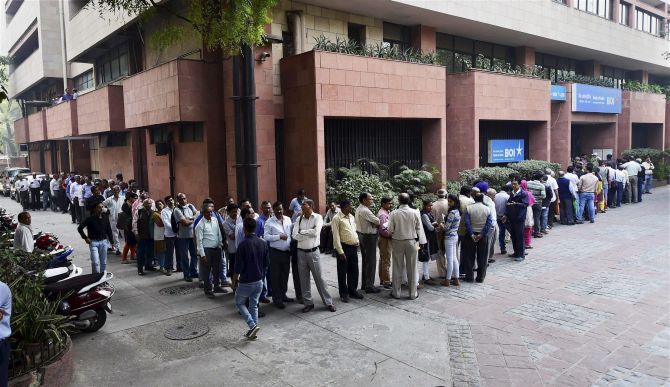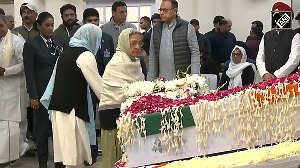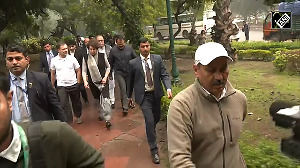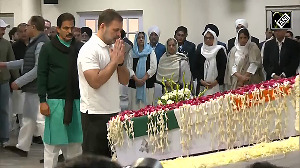
Political compulsions have led to a change of narrative. But, in the ministry of finance, senior management ought to be looking at more serious issues than ‘digitally cashless’ India, says Rahul Khullar.
What was the amount demonetised? The value of the currency that ceased to be legal tender was Rs 15.44 lakh crore (Rs 8.58 lakh crore in Rs 500 notes and Rs 6.86 lakh crore of Rs 1,000 denomination).
What was the main object of demonetisation? The intent was to render worthless the black wealth held as cash assets, ie, in currency.
What was the anticipated gain? The government expected that about 25 per cent or more of the currency in circulation would not return to the system. Owners of such black currency assets would not be able to declare it and exchange it. Then, this amount would be worthless paper.
What was the pain for gain argument? Demonetisation would cause some economic disruption. Everyone would be impacted. Since it would take some time to replace all the demonetised currency with new notes, there would be some dislocation. It is this pain that would have to be borne by all to extinguish the black wealth.
A month later, what amount will be rendered worthless? As on December 10, Rs 12.44 lakh crore (80.5 per cent) has returned to the banking system. In recent days, the amount being returned is Rs 30,000 crore per day. This rate will gradually dwindle as the cutoff of December 30 nears.
Assume (conservatively) that over 20 days, the average return per day is Rs 10,000 crore. Then, another Rs 2 lakh crore would come back to the system. The total would then be Rs 14.44 lakh crore. This would mean that 93.5 per cent of the demonetised currency finds its way back to the banking system. Hence, an amount of Rs 1 lakh crore (probably much less) would be worthless paper.
How much money has replaced the demonetised currency? As on December 10, Rs 4.61 lakh crore was supplied to banks. Roughly, the estimated break-up is: Rs 3.2 lakh crore (Rs 2,000), Rs 0.4 lakh crore (Rs 500) and Rs 1 lakh crore (Rs 100 or less). This means that 20 per cent of the demonetised currency (Rs 500/Rs 1,000) has been replaced with new currency.
In addition, smaller denomination notes have been supplied. In all, about 30 per cent of the amount demonetised has been replaced with substitute currency.
How many notes have been printed? 2,180 crore notes have been issued. 2,010 crore notes are of value Rs 100 or less. 170 crore notes are of Rs 500 and Rs 2,000 denomination -- the bulk are Rs 2,000 notes. Also, the intent of supplying more small-denomination notes was to ease problems of liquidity.
How much more time will it take to supply substitute currency? Assume that new Rs 500 notes will be issued in the same value as before demonetisation, viz, Rs 8.58 lakh crore. Ditto for Rs 1,000 notes except that they are replaced by Rs 2,000 notes.
Using the Reserve Bank of India data, the printing capacity is estimated. Up to December 10, the bulk of this capacity was used for notes of value Rs 100 or less; less than 20 per cent of capacity per day was used for the Rs 500/Rs 2,000 notes.
Suppose that December 10 onwards the printing capacity allocated to Rs 500/Rs 2,000 notes is tripled. Then, it will take 118 days to replace the Rs 500/Rs 1,000 in value by Rs 500/Rs 2,000. If the capacity is merely doubled, then the time taken is 177 days.
Since the Rs 2,000 note is largely illiquid, it may be decided to increase the printing of Rs 500 notes. This will increase the time further. And, if it is decided to ease the liquidity problem by expanding the overall availability of Rs 100 notes, then the time horizon recedes further.
A summing-up -- it was thought that Rs 3-4 lakh crore would be trapped. Suppose that Rs 3,75,000 crore was the amount. Now, 25,000 households each holding Rs 15 crore would account for the sum. There are 25 crore households (population of 125 crore and household size of five). 25,000 households account for 0.01 per cent. So, the prospective gain from 0.01 per cent of our population was the basis for justifying the pain to 99.99 per cent.
Second, it is clear that the gain will be far short of what the government thought. In contrast, the pain was grossly underestimated. There has been large-scale disruption of economic activity. The gain has been illusory -- not so the pain.
Third, the new notes issued have been mostly Rs 2,000 and small-denomination notes. This explains why Rs 500 denomination notes are in short supply. Shifting printing capacity from Rs 2,000 to Rs 500 notes implies printing four times as many notes. So, addressing the liquidity problem comes at a cost -- it will take longer to replace the demonetised currency.
Fourth, on an optimistic basis, the earliest the currency will be replaced is by March-end 2017. It could stretch longer -- even up to May-June 2017. Since the printing effort will now shift towards Rs 500 notes, it is unlikely that 50 per cent of the demonetised currency (in value) will be replaced by early January 2017. A more realistic timeline is January-end.
Fifth, the disruption will continue for the next quarter (and probably beyond that). Hence, for the large part of two quarters there will be an adverse impact on the real economy. Estimates of slowdown that were dismissed as “egregious” suddenly don’t seem as outrageous.
The main issue now is this: How much time is it going to take to put the economy back on the rails? There will be lag effects. Rational expectations (from the demonetisation experience) will have to be reversed. The revival of investment may be staggered into 2018. Undoing the reverse migration of labour (back to the villages) is going to take time.
Will it be necessary for government to prime pump the economy?
Political compulsions have led to a change of narrative. But, in the ministry of finance, senior management ought to be looking at more serious issues than ‘digitally cashless’ India.
Rahul Khullar retired as chairman, Telecom Regulatory Authority of India and was commerce secretary during 2009-2012.












 © 2024 Rediff.com -
© 2024 Rediff.com -